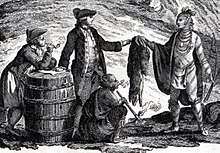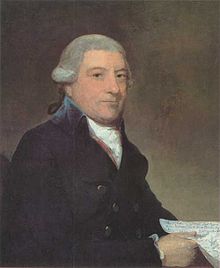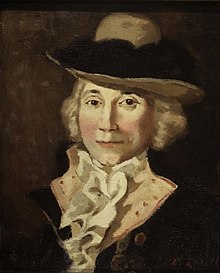Beaver Club
According to the club's rules, the object of their meeting was "to bring together, at stated periods during the winter season, a set of men highly respectable in society, who had passed their best days in a savage country and had encountered the difficulties and dangers incident to a pursuit of the fur trade of Canada".
[3] The members of the Beaver Club were bon vivants, renowned for the Scottish Highland hospitality they offered to their guests and for the jovial, rollicking behaviour that carried on at their meetings.
He is equally at home on horseback or in the canoe - indefatigable when needful, careless of heat and cold, and brave as steel, as though he bore a charmed life, in countries where the Queen's writ scarcely runs, where the law only of personal authority takes effect.
[5] In 1786, controlled by Simon McTavish and the Frobishers, there were 28 chief partners of the North West Company and their business was conducted by an army of about 2,000 men, not including the native Indians.
The voyageurs were the most experienced canoe-men and wilderness travelers in the world, and the partners took a high pride in the skill of their hardy henchmen, giving each on their arrival a régale, which meant a gallon of rum.
They emerge suddenly into civilized life after a banishment of many years in dreary forests and among a race of savages; and are apt to be dazzled by the glare of refinement and luxury, whose temptations are too powerful to be resisted.
Following that fortnightly meetings were held until April between private houses (notably at Beaver Hall, the home of Joseph Frobisher, whose dining table comfortably sat forty guests) and at various hotels and taverns in Montreal.
Then, accompanied by Highland Pipers, on a dais of red velvet a flaming boar's head was brought into the dining room, a piece of camphor having been placed in its mouth before the grand entrance.
The menu included country food such as Pemmican (brought from Saskatchewan), braised venison, bread sauce, "Chevreuil des Guides" (a stew), venison sausages, wild rice, quail and partridge "du Vieux Trappeur"; fish from the Great Lakes, pickled turnips, "Sweet Peace" applesauce, Atholl Brose, bear meat, buffalo tongue and bag pudding (which might have been Figgy duff).
[5] After dinner, any previous formalities were laid aside as the men started to sing old voyageur songs and exchange tales about their perilous adventures in the old fur trading days.
The festivities often ran into the early hours of the morning with the members dancing on the tables, re-enacting various canoeing adventures and breaking numerous bottles, plates, glasses and chairs in the process.
[12] At one such dinner, twenty members (including Sir Alexander Mackenzie and William McGillivray) were still singing and dancing at 4am, and close to 120 bottles of wine were either drunk, broken or spilled that night.
By 1809, the seventy-year-old Alexander Henry hinted at a segregation between the young and old members in a letter to John Askin: "There is only us four old friends (himself, James McGill, Isaac Todd and Joseph Frobisher) alive, all the new North westards are a parcel of Boys and upstarts, who were not born in our time, and supposes they know much more of the Indian trade than any before them".
[13] The club continued to meet until 1804, and there was a resurgence of interest between 1807 and 1824, but when Sir George Simpson tried to revive its traditions in 1827 it was doomed to failure – the spirit enjoyed by the earlier traders had gone.










